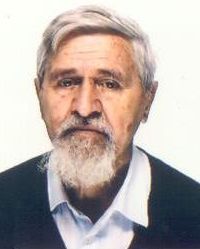Daniel Comboni
Comboni Missionaries
Institutional area
Other links
Newsletter
In Pace Christi
Canova Pio Santo
Fr. Pio Santo Canova was born on 22 May 1921 at Castione della Presolana, in the province of Bergamo (Italy). After four years of elementary school at his village, he joined the diocesan seminary of Bergamo where he completed high school. He continued his studies at the seminary up to the second year of Senior School which he finished in 1941. During the summer of that year he decided to become a missionary and contacted the Comboni Missionaries.
On 22 September 1941 he entered the Comboni novitiate at Venegono Superiore (Varese) where he took his first vows on 7 October 1943. He studied philosophy and theology at Rebbio di Como and at Verona, where he made his final profession on 7 October 1946 and was ordained priest on 31 May 1947. His first appointment was to Venegono Superiore, where he was the community treasurer for almost three years. In 1950 he was sent to Mozambique, after learning Portuguese at Viseu in Portugal.
He left for Mozambique with the third group of Comboni Priests and Brothers to arrive in the missionary territory of the diocese of Nampula. Immediately on arrival, Fr. Santo was appointed to Mossuril, founded 500 years previously and one of the oldest missions of Mozambique. Fr. Santo worked as curate in that parish, dedicated to Mary Immaculate, for almost three years. His first job was to learn Makua, the local language.
From early 1954 to 1957 he was superior of the mission of Carapira; from 1958 to 1962 he was in charge of the parishes of Cabaceira and Matibane. From 1963 to 1968 he worked as curate at Lurio. He then returned to Matibane for two years, until 1970, the year in which he first managed to go home for holidays, also taking part in an updating course, very useful to face the challenges of the years ahead.
He returned to Mozambique and worked at Lurio for the next five years (1971-1976). These were years of great political and religious tensions: years of armed conflict between Frelimo (Mozambique Liberation Front) and the colonial army of Portugal; the years of the “Law of conscience” (1974) with which the group of Comboni Missionaries in Mozambique faced the period preceding independence from Portugal, achieved in June 1975.
In July 1976 Fr. Santo was put in charge of Mirrote, a mission with more than 43,000 inhabitants, of whom only 6,000 were Catholics, scattered in more than forty chapels. Fr. Santo was assisted in his work by a Comboni Brother and three Sisters. In 1980 we find him at Memba, with a total population of 62.000 people, of whom only 7,500 were Catholics, while 37,000 were Moslem.
From 1982 to 1992 he was in charge of the parish of “Maria Assunta” at Mecuburi, a recent foundation, together with another Comboni priest. These were the troubled years of armed conflict between the Frelimo, now in power, and the Renamo (National Resistance of Mozambique). Caught in the middle were the people who were pursued, captured, freed but only to be captured again, punished and often killed during the fifteen years of the civil war. Both sides made the Christians, and the missionaries, victims and martyrs.
The time came for Fr. Santo, too, to pay with his blood for remaining close to the people. On 5 September 1984, as he was taking a seriously ill woman to Nampula hospital, Fr. Santo was caught in a Renamo ambush. At least this is what people thought. You could never be sure which group was doing the shooting. He was wounded in the foot and in the back. He lost a lot of blood but managed to survive, thanks to the first aid received at Nampula hospital. When he returned to the mission he had the consolation of hearing the Moslems praying for him, so that “their friend” would survive.
In 1987, in another shooting, he was badly wounded in his hand and had to go to Verona. Here the doctors were surprised at his courage in bearing the pain. From 1992 to 2001 Fr. Santo worked in the mission of Alua, founded in 1991. He could no longer drive, but continued to visit the nearby chapels. He spent his last years first in Carapira and then at Namapa.
Fr. Santo died in Nampula on 12 March 2006 at the age of 84, after spending 55 years in the mission.
At his death Bro. Pietro Martin wrote: “Fr. Santo has always been for us a true example of a Comboni Missionary: he was a real man, a missionary of faith, a servant of the local Church and of the people of Mozambique. He had a joyful love for his Christian, priestly and Comboni vocation and lived it out with enthusiasm and heroism.
“He was a real apostle according to the charism of Comboni. Now he has finished writing his life’s history, his faith and his missionary commitment. He has left us the inheritance of his joy in belonging to the Comboni Family, his love for the poorest and most abandoned, the courage to fight for the common good and has taught us not simply to be men of action but also of contemplation. The province of Mozambique and the Comboni Institute, have, together with Comboni and a great host of Comboni Missionaries, all witnesses of the faith, a new advocate with the Father.”
Da Mccj Bulletin n. 232 suppl. In Memoriam, ottobre 2006, pp. 18-25

